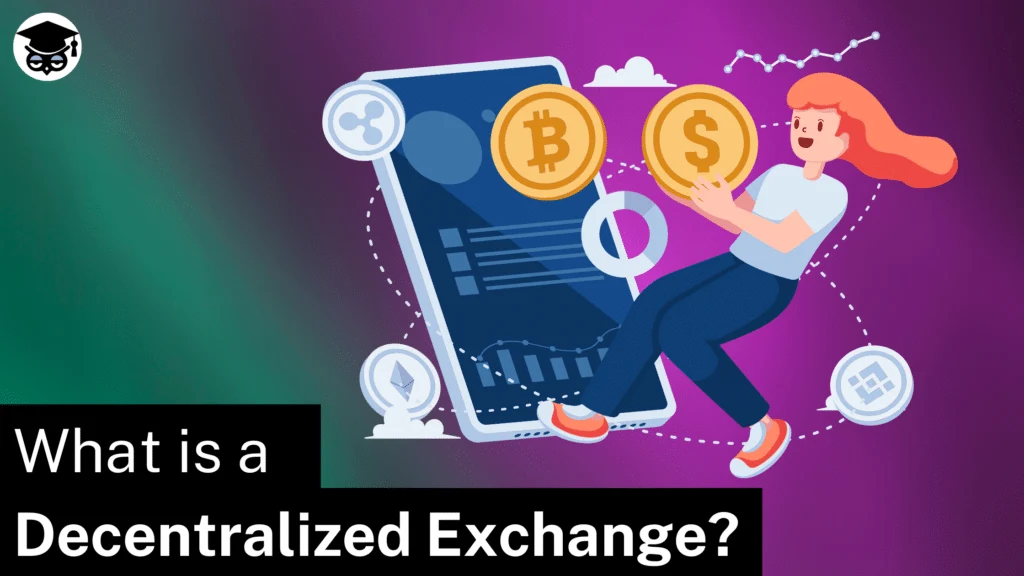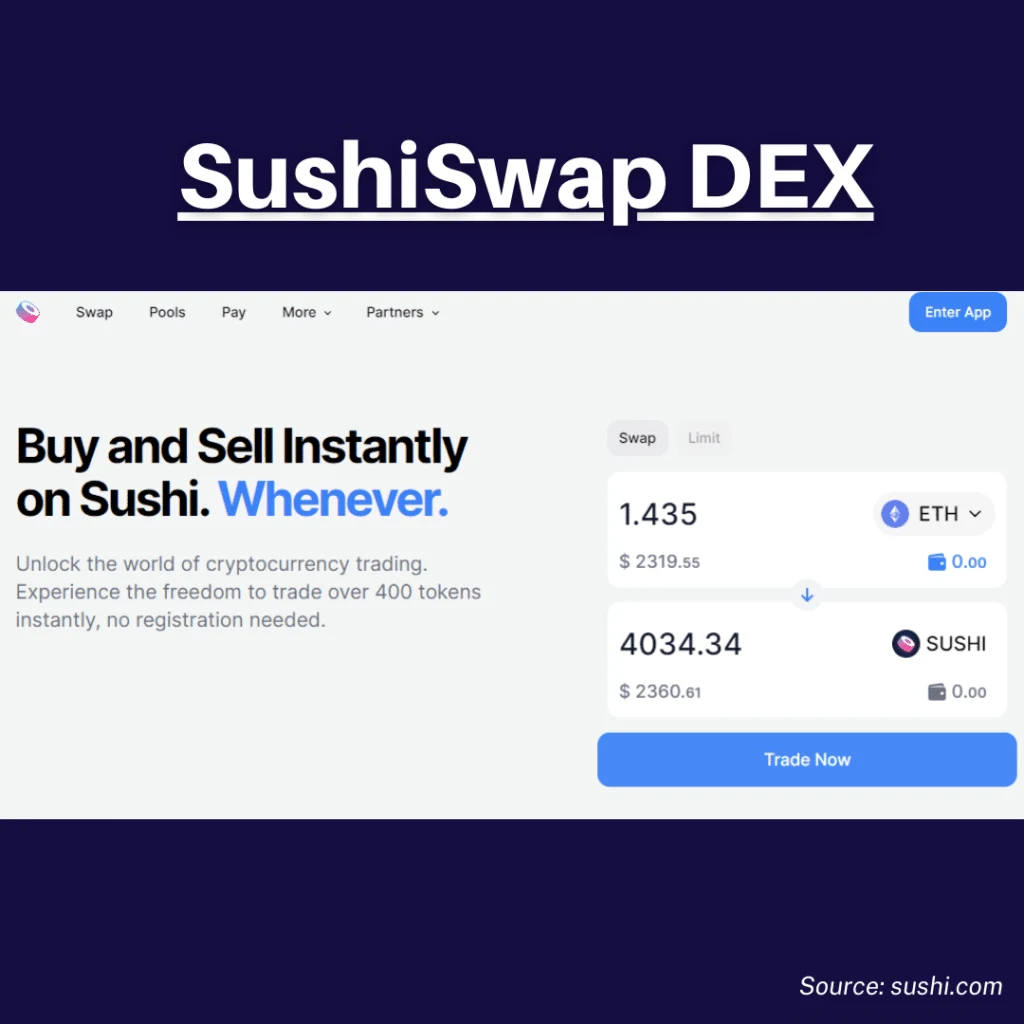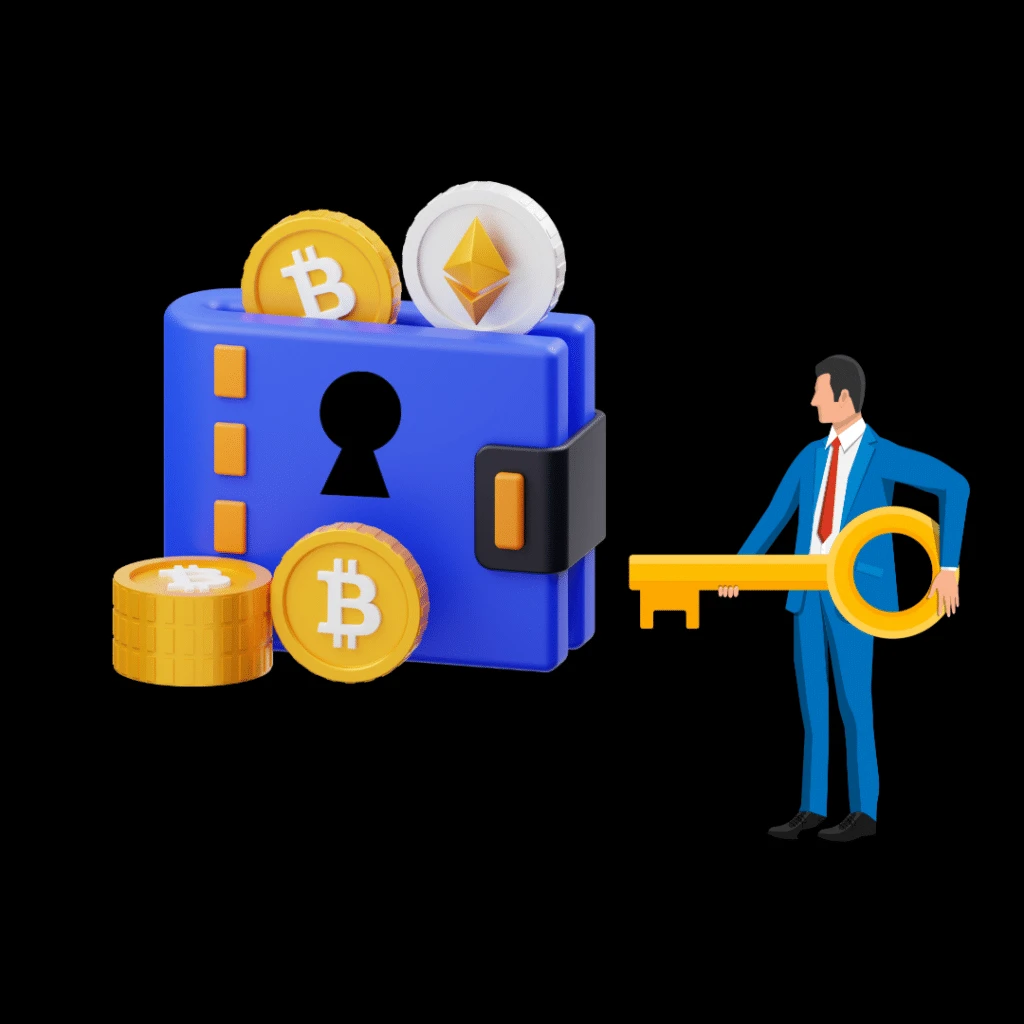What is a Decentralized Exchange?
A DEX is a decentralized crypto exchange that allows users to trade cryptocurrencies directly without having to go through intermediaries or give up custody of their assets.
The Long Definition
Decentralized means control of an activity or organization is done by many smaller units rather than one big one. An Exchange is an online marketplace where you can buy, sell, or trade cryptocurrency.
So, a decentralized exchange (DEX) is a cryptocurrency marketplace where you can buy and sell cryptocurrency online. Instead of being controlled by one big organization or company, it is controlled by a large network of individual users all over the world.
DEXs do not hold cryptocurrencies on behalf of the user. Instead, traders on a DEX trade directly from their own wallets. They enjoy complete custody and control of their cryptocurrency assets.
Decentralized crypto exchanges are part of the decentralized finance (DeFi) movement. DeFi is a relatively recent but growing market in the crypto space. Its driving philosophy is “disintermediation,” which calls for the removal of intermediaries (middlemen, like banks) in finance.

History of DEXs
Early crypto exchanges were centralized. The most notable of these is Mt Gox, which, at some point, handled 70% of global bitcoin trades. It was a centralized exchange. It held bitcoin on behalf of its users. This arrangement worked quite well– until it didn’t.
Mt Gox was hacked in 2011. And while the exchange would survive that incident, it couldn’t withstand what came next.
In 2014, it was revealed that Mt Gox had lost more than 800,000 of the bitcoins belonging to users. The lost Bitcoin was worth around $460 million at the time.
This was the first huge loss in crypto. Its sheer magnitude made the crypto community realize how big of a risk centralized custodians were and from this realization came the desire for decentralized exchanges.
The Ethereum blockchain was launched a year later, in 2015. Being a “programmable blockchain,” it provided the platform needed to build DEXs. The first DEXs to be developed include IDEX, EtherEX, and EtherDelta. These early exchanges enjoyed some minor successes.
However, the breakthrough came in 2018 with the creation of Uniswap. Uniswap has since grown to become the largest DEX. Other successful exchanges have also popped up over the last few years. These include Defi Swap, Pancakeswap, Curve, and Sushiswap.

How do DEXs work?
Early DEXs used a system called the orderbook.
This system has two types of orders – buy orders and sell orders. Buy orders are when a buyer wants to buy a certain amount of cryptocurrency at a certain price. Sell orders are when a seller wants to sell a certain amount of cryptocurrency at a certain price. The system matches up buyers and sellers so they can complete a trade.
To work properly, exchanges need enough money in the “pool” to make sure there is enough to buy and sell. The term they use is liquidity, which means having enough crypto assets available to let folks buy, sell, or trade when they want to.
But in its early days, DeFi didn’t have a lot of liquidity. So, the orderbook model didn’t work as well.
The solution to this problem came in the form of automated market makers (AMMs). AMMs use liquidity pools – pools of cryptocurrency that are created by locking up funds into a special type of contract.
People who provide funds for these pools are called liquidity providers, and they are given trading fees in exchange for their contribution. The liquidity pools allow DEXs to offer faster and cheaper trades, but there is still a risk of slippage. Slippage is when prices change between the time a trade is initiated and the time it is completed.
DEXs only have tokens compatible with their native blockchain. For instance, most DEXs are native to the Ethereum blockchain. Therefore, they only allow you to swap between ERC-20 tokens, like ETH, USDT, and Basic Attention Tokens (BAT)
DEXs only support crypto trading pairs that are built on blockchains. You cannot exchange fiat for crypto or crypto for fiat. Instead, you can only swap cryptocurrencies, like ETH for BNB or USDT for ETH.

What are the advantages of DEXs?
Decentralized exchanges have several benefits. These include:
Anonymity
Decentralized exchanges do not require a user to create an account in order to trade. They will not ask for your name, email, physical address, or identification. As long as you have a wallet and internet connection, you can interact with the DEX anonymously.
Custody and Control
DEXs are non-custodial. This means that they do not take custody of the user’s funds. Instead, you enjoy full control of your crypto through your wallet. The only time the exchange gets your money is when you interact with it during a swap.
Holding your crypto offers two key advantages:
- You retain total control over your funds.
- There is no risk of losing your crypto if the exchange fails or is hacked.
Token Diversity
DEXs offer more token diversity than CEXs. You can find almost all tokens compatible with a particular blockchain on a compatible DEX. This makes DEXs the best place to buy altcoins. CEXs, on the other hand, have to go through an approval process for a coin before allowing it on their platform. Thus, they don’t have as many altcoins as DEXs.

What are the disadvantages of DEXs?
DEXs demand more technical knowledge than CEXs. You have to know how to create and safeguard a wallet and link it to a compatible exchange. Furthermore, you need to have the correct token in the wallet to pay for the network’s transaction fees. Using a decentralized exchange without this knowledge is challenging and can cause you to lose funds.
Another disadvantage is the lack of crypto-fiat trading pairs. DEXs do not let you buy crypto with fiat or sell crypto for fiat. To do this, you’ll have to go through a centralized exchange.
How do I use DEXs?
DEXs are non-custodial; that is, they don’t keep your assets for you. Instead, you maintain custody of your cryptocurrencies and trade from your wallet.
So, you’ll need a crypto wallet to get started. Note that this wallet should be compatible with the blockchain on which the DEX is built.
Conclusion
A DEX is a place where people can swap different types of cryptocurrencies without any kind of middleman. There is no permission needed since everything happens through the use of smart contracts.
You won’t have to create an account to use a decentralized exchange like you would with a centralized exchange. However, their decentralized nature means there is no customer service, and it takes some time to learn the ins and outs of the DEX.
